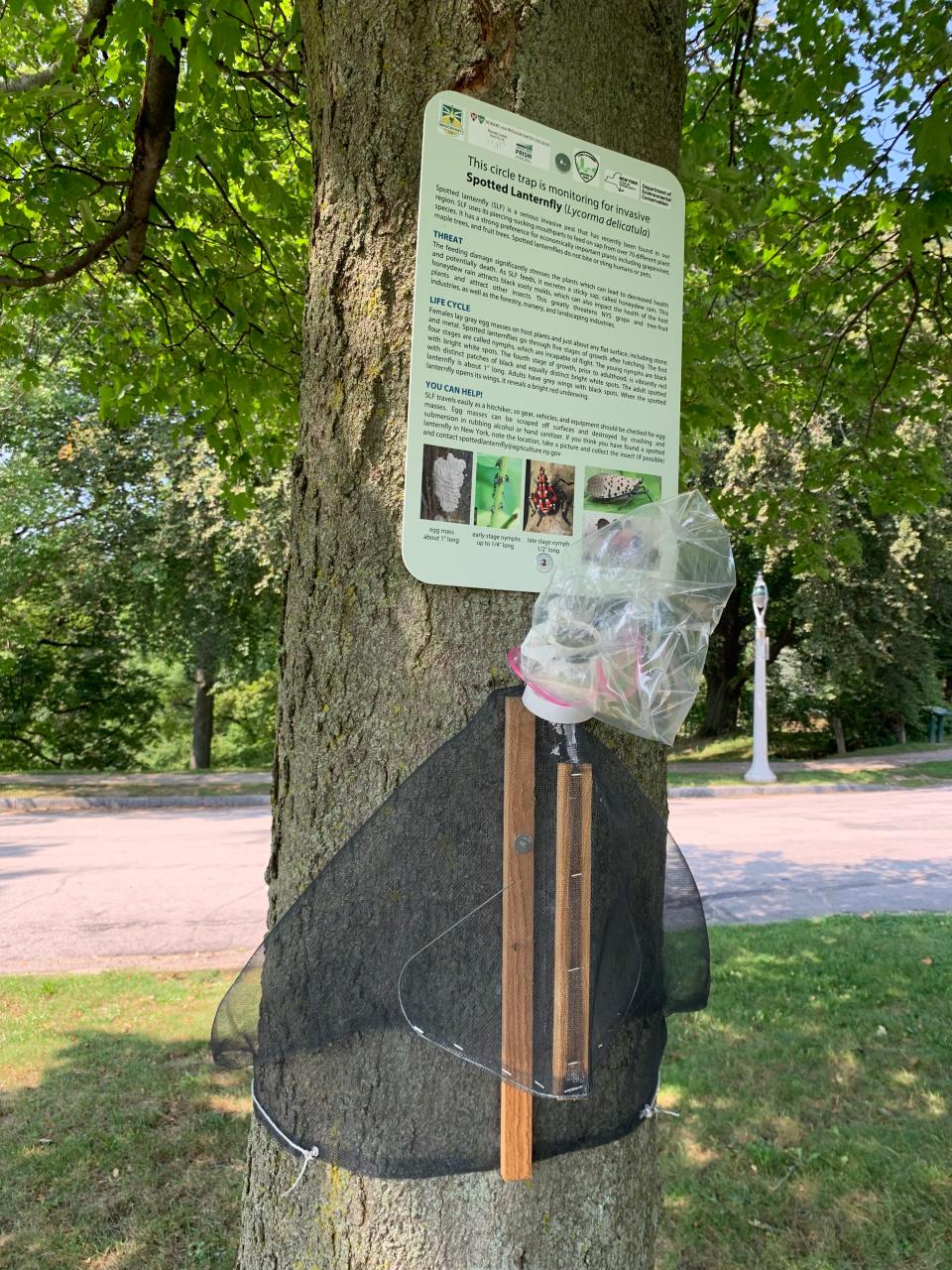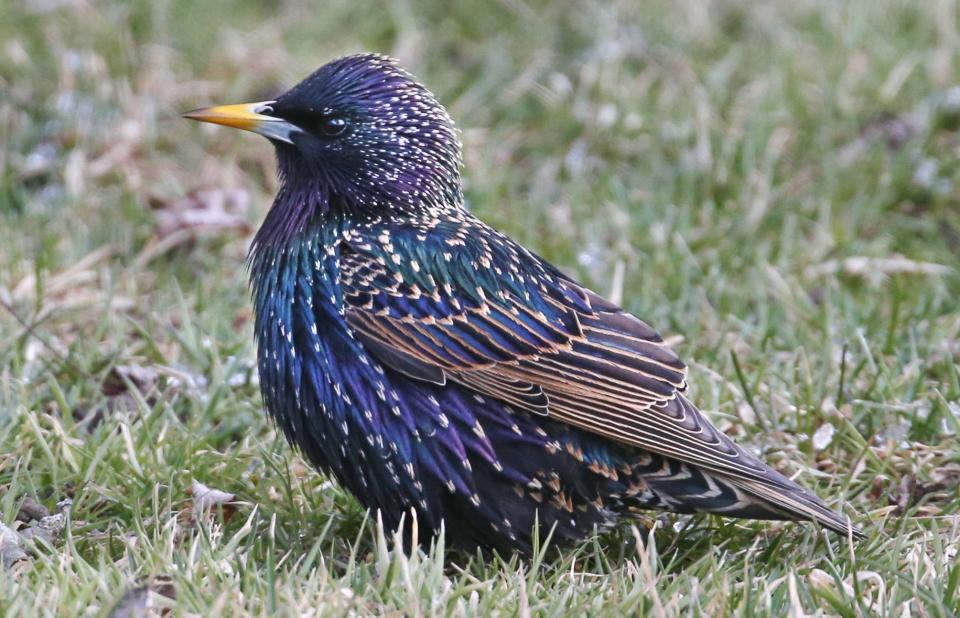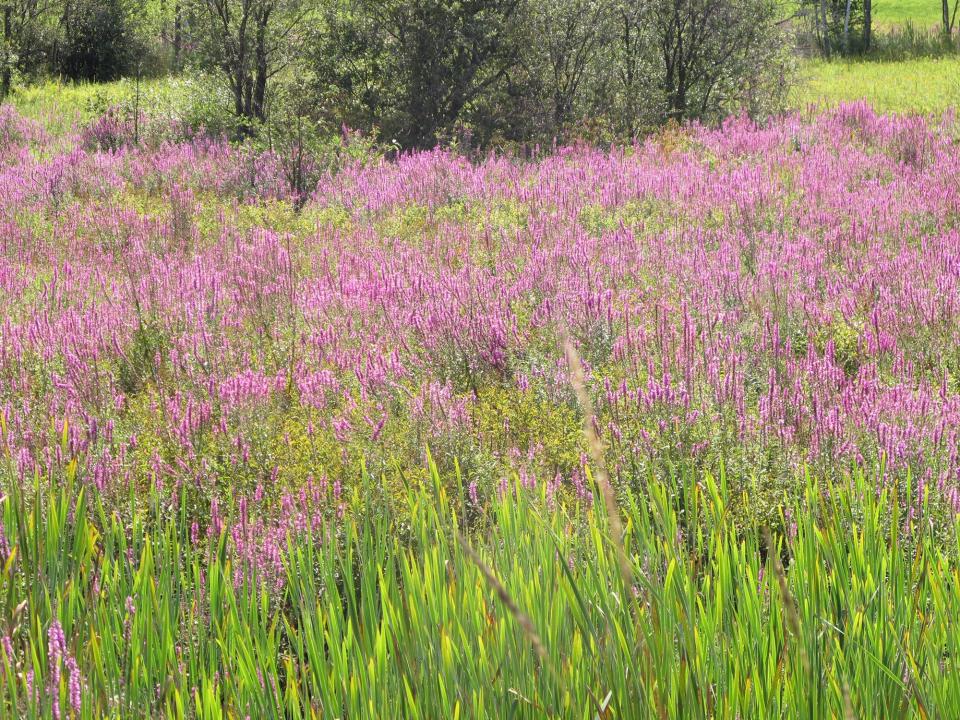Invasive species wreaking havoc in NY. Here are some of the most notorious
Ecosystems exist in a delicate balance, and rogue elements can easily tip them out of equilibrium.
Invasive species already wreak havoc on the wild spaces and agriculture of New York. The state Department of Environmental Conservation defines invasive species as “non-native species that can cause harm to the environment, the economy or human health.”
This week, Feb. 26 to March 3, is National Invasive Species Awareness Week, and it serves as a chance for agencies and organizations combating these non-native flora, fauna and microorganisms to reach out to the public and talk to them about the threat these species pose.
Some invasive species have received more attention than others, but they span across the spectrum of aquatic and terrestrial life. Below are some of the most high-profile invasives in New York.

Spotted lanternflies in New York
Native to Asia, spotted lanternflies feed on more than 70 plant species, including maple, walnut and fruit trees, grapevines and hops. First documented in New York at Staten Island in August 2020, these insects get their name from the black spots on the gray forewings and red hindwings of the adults. The pre-adult nymph stage progresses from black with white spots to red with white and black spots.
Spotted lanternflies feed on sap and this feeding can make crops vulnerable to disease or other insects. It also creates a byproduct, honeydew, which can boost mold growth, attract other insects and get on people’s clothing. These feeding habits also threaten the state’s apple and grape economy, valued at $350 million, according to the state DEC.
Monroe County is classified as having an infestation of spotted lanternflies, based on information from New York State Integrated Pest Management, a program of Cornell University’s College of Agriculture and Life Science and Cornell Cooperative Extension.

European starlings in New York
As the name would suggest, European starlings originated from Europe and first arrived in New York City’s Central Park in 1890. The longtime residency in the United States has allowed European starlings to become one of the most populous birds in the country, with as many as 200 million residing here, according to New York Invasive Species Information.
Starlings have iridescent feathers and slender yellow beaks. They can impact agriculture by eating cattle rations and destroying fruit and grain crops. They roost in large numbers in inconvenient places like airports, barns and industrial buildings. They can also spread diseases like e coli or salmonella through their droppings.
European starlings reside year-round throughout the contiguous United States, including New York.

Purple loosestrife in New York
Purple loosestrife, of Eurasian and North African origins, can be found in wetlands, marshes, ponds and other moist habitats, though it has been found to spread in meadows and pasture land, according to NYIS. This long-time invasive species was already well-established in New England by the 1830s and spread along canals and other waterways.
A perennial, purple loosestrife can produce more than 2 million seeds per plant. They have woody stalks and when in bloom produce purple flowers with five to seven petals.
The New York State Invasive Species Database includes numerous sightings of purple loosestrife in Monroe County, especially along Lake Ontario and the New York State Thruway corridor.
Zebra mussels in New York
These Eurasian bivalve mollusks were first found in Lake St. Clair, Michigan in 1988 after spreading from the Black, Caspian and Aral seas, and Ural River drainage, according to NYIS.
These small invaders displace native species, attaching to a variety of surfaces and causing a nuisance to humans due to their sharp shells and propensity to clog water intake and delivery systems. As filter feeders, they clear water, but breed faster than they are consumed by predators and can disrupt the food chain and change water chemistry, according to the DEC.
Zebra mussels were first discovered in Seneca Lake in the summer of 1992 and are found throughout the Finger Lakes region and in much of the rest of the state, including Monroe County.
Did you know?: Looking at the sun in an eclipse will fry your eyes painfully. Take it from someone who knows
Invasive species and climate change
While New York’s forests have been described as the lungs of the state, they also play a vital role in the state reaching its climate goals for carbon sequestration. Unfortunately, there are three invasive pests threatening the state’s Adirondack region.
Those threats? Hemlock woolly adelgids, beech leaf disease and the emerald ash borer.
Hemlock woolly adelgid are an aphid-like insect from Japan that targets its namesake tree, forming cotton-like masses on the base of its needles. This can kill trees as quickly as 4 to 10 years as the feeding damages the canopy of host trees, disrupting nutrient flow, according to the state DEC.
More: Building a more bikeable Rochester: Sights from behind the handlebars
Beech leaf disease can reduce leaf and bud production as well as leaf striping or curling, affecting some branches and not others on a tree. It appears to be especially dangerous for young trees, but can kill beech trees of any age, according to the state DEC.
The emerald ash borer is a beetle, originally from Asia, that kills all varieties of the state’s ash trees. The adults have shiny green bodies and leave distinctive d-shaped exit holes on affected trees; an infected tree will typically die within two to four years.
The three varieties of trees affected by these threats — ash, beech and hemlock — make up a quarter of the volume of the Adirondack forests, said Tammara Van Ryn, project manager for the Adirondack Park Invasive Plant Program.
Some scientists say that we may lose hemlocks in the southern Adirondacks within the next generation,” Van Ryn said.
Warmer winters and average temperatures make for a more hospital environment for species like the hemlock woolly adelgid, Van Ryn said. So while climate change is not directly responsible for the spread of invasive pests, it can create better conditions for them.
“What it means is as we’re relying on these forests to keep carbon stored in order to meet New York’s climate goals, that’s going to be harder if our forests start to die off because of forest pests and pathogens,” Van Ryn said.
— Steve Howe covers weather, climate and lake issues for the Democrat and Chronicle and can personally attest to how sharp the zebra mussels in Seneca Lake are. Share with him at showe@gannett.com.
This article originally appeared on Rochester Democrat and Chronicle: New York's most notorious invasive species: What to know

